Huawei Watch GT 3 review: Beautiful, enduring, functionally limited


Did Huawei shoot itself in the foot with the Watch GT 3? The smartwatch is very reminiscent of the very expensive and quite good Huawei Watch 3 Pro, for which you have to pay almost 500 Euros. How well the much cheaper model with an MSRP of 229 euros does in everyday life, I found out for you in this review. Spoiler: Personally, I would opt for the Watch GT 3. ?
Good
- Long battery life of up to 14 days
- Great display
- Beautiful workmanship
- Good operation via the 3D crown
- Precise tracking
Bad
- Hardly any apps to choose from
- No LTE module
- No reply options for messages
- Surprisingly annoying: No emojis
- No NFC
Huawei Watch GT 3 in a nutshell
Compared with its big sister, the Huawei Watch GT 3 shines with a much better price-performance ratio. Among other things, the manufacturer puts the red mark on the LTE and the response option for notifications. That is annoying, but not an absolute no-go. It is a pity that Huawei has still hardly expanded its range of installable apps.
The hardware of the Watch GT 3 is, however, almost impeccable. Processing and display are top-notch, and the tracking functions make sense. But if you are looking for a smartwatch with high autonomy, the GT 3 is rather not for you. The battery life of up to 14 days is great, but an LTE module is missing. It is also annoying that you cannot even reply to messages with pre-configured messages.
Design & display: Huawei shows what they can do
You can buy the Huawei Watch GT 3 in two case sizes. You can choose between 42 millimeters and 46 millimeters - so the watch is not discreet in any version. Nevertheless, it is lighter and less bulky than the Watch 3 Pro, which is noticeable during sports. Huawei relies on AMOLED for the display, which is good for the watch on bright days. The smartwatch is waterproof up to 5 ATM.

What I liked:
- Beautiful workmanship.
- Very good display.
- Different case sizes.
- Precise vibration motor.
What I disliked:
- Pressure point of the 3D crown too spongy.
There's not much to criticize about the design of the Huawei Watch GT 3 aside from my personal preferences. Compared to its predecessor, the Huawei Watch GT 2, it has shrunk. The second GT model came to Europe exclusively with a 47-millimeter housing and was thus more suitable for large wrists. The fact that Huawei offers two different case sizes is thus positive.
Case sizes and wristbands
| Size | Wristband | Price |
|---|---|---|
| 42 mm | Plastic bracelet | 209.99 GBP |
| 42 mm | Leather strap | 229.99 GBP 328.99 CAD |
| 42 mm | Milanese strap | 279.99 GBP 428.99 CAD |
| 46 mm | Plastic | 229.99 GBP 328.99 CAD |
| 46 mm | Leather strap | 239.99 GBP |
| 46 mm | Stainless steel strap | 299.99 GBP 428.99 CAD |
The same applies to the quality of the AMOLED panel. It has a crisp 466 x 466 resolution and is bright enough to be read even in sunshine. As with the Watch 3 Pro, the operation works via a 3D crown that is somewhat reminiscent of the Apple Watch. However, the pressure point of the crown on the Watch GT 3 is noticeably spongier than on the other models. This is something you can get used to, but a certain ambiguity about whether you have made a selection or not remains.

Last but not least, I have to praise the smartwatch's vibration motor, as I believe this is especially important in wearables. The vibration is precise and strong enough to catch your attention even while moving. In addition, there are the light impulses when turning the crown, which once again became a kind of "Fidget spinner" during the test period.
Software: HarmonyOS still in app crisis
HarmonyOS is used on the Huawei Watch GT 3. This is Huawei's own operating system that was developed as a result of the trade embargo with the US. Again, HarmonyOS is intuitive and pretty, though still severely lacking in available apps.
What I liked:
- Installing companion apps is intuitive despite detours.
- HarmonyOS is nicely tidy.
- Easy to use.
What I disliked:
- Hardly any additional apps in the App Gallery.
- No apps at all in connection with your iPhone.
When I tested the Huawei Watch 3 Pro a few months ago, HarmonyOS was still brand new. Accordingly, there were a few teething problems, but they were fixed by updates back then. It's nice to see in December 2021 that Huawei has further improved the Watch's setup. With a Pixel 6, setup and pairing were simple and easy despite the detour called APK installation.
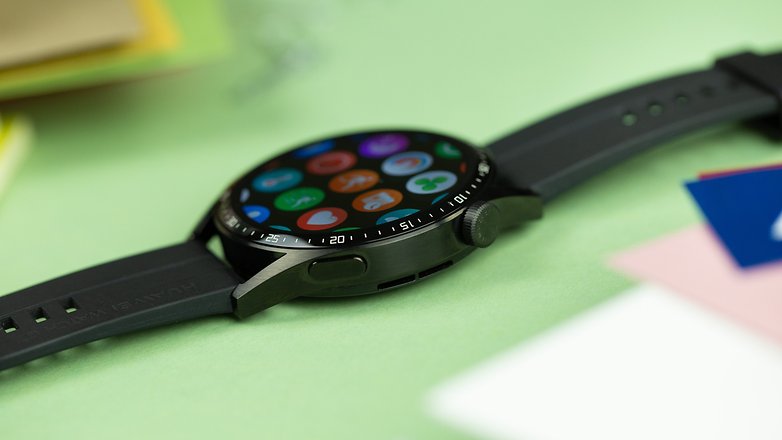
HarmonyOS has remained unchanged since the Watch 3 Pro. The operating system is tidy, optimized for 3D crown operation, and offers clear menus and chic icons. In addition, there is a variety of watch faces, and you can also arrange the various tiles in the operating system yourself.
While I quite like HarmonyOS, I can no longer comprehend Huawei's negligence when it comes to app availability. In the Huawei App Gallery, which you can only access via the Health app on the GT 3, there are only 31 apps as of December 17. None of them is interesting for me, I rather miss big players like Spotify, Google Maps and Co. Surely, this is due to the US embargo, but it is still a pity.
Also a pity: If you use an iPhone, you can't access the App Gallery at all. If only there was a better smartwatch alternative for iPhones...
Performance & features: Neither LTE nor NFC
One of the ways Huawei is lowering the cost of the Watch GT 3 is by making three trade-offs: First, the manufacturer has replaced its flagship smartwatch SoC with the ARM Cortex-M. Second, the option to order the GT 3 with an LTE module is missing. Last but not least, there's no NFC for mobile payments. As with the more expensive model, you'll have to live without premium features like ECG, bioimpedance sensor, and more.
What I liked:
- Smooth performance in everyday use.
- Sensors for pulse rate, SpO2, and skin temperature.
- Precise GPS.
What I disliked:
- LTE and NFC have fallen victim to the cost reduction.
- Hardly any special features compared to other smartwatches.
Since there's no benchmarking tool in Huawei's app gallery, it's not really possible to quantify the smartwatch's performance. However, a performance difference is not noticeable in daily use compared to the more expensive model. Apps and features open and start quickly, scrolling through lists works without jerkiness. A smartwatch hardly has to do much more in this respect.
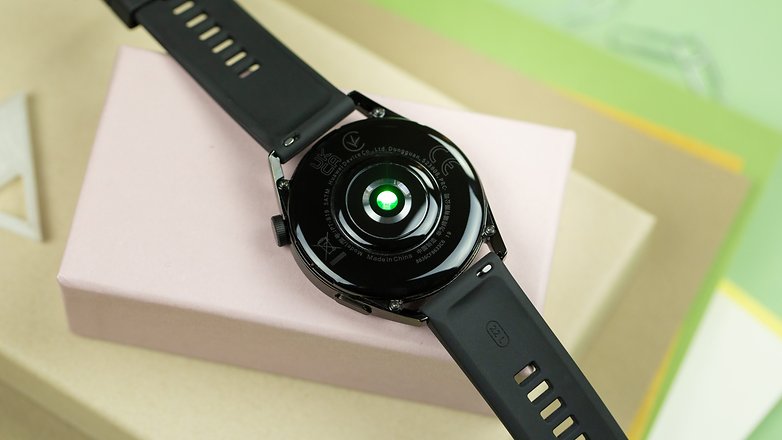
What it should be able to do in 2021, though, is connect to the internet without a smartphone and not let you down at the supermarket checkout. The watch does not meet these requirements, because a version with LTE is missing from the Chinese giant lineup. While you can still substitute the internet connection with your smartphone, the lack of NFC cannot be replaced.

For sports use, Huawei has integrated various sensors for vital data in the watch, but there are only the standard features here. You can measure your pulse, get the blood oxygen level displayed, and may measure your skin temperature. All three features can be used automatically 24 hours a day, which ensures a complete monitoring of your body. This is where the watch shines!
The shine fades a bit, however, when you look at the competition. The Apple Watch introduced a digital ECG a few versions ago and can protect you from a heart attack. The Galaxy Watch 4, in addition to an ECG, also offers a pulse measurement and, in the fourth generation, the measurement of your bioimpedance. Huawei will have to improve this in the next model at the latest.
Battery: 14 days of battery life - under one condition
The Watch GT 3 comes with 292 or 455 milliampere hours depending on the case size. With this capacity, Huawei achieves long runtimes of up to 14 days, but only in the larger model. The maximum battery life is halved in the smaller model - so 7 days are possible. Wireless charging is also possible, even with your smartphone.
What I liked:
- Long runtimes on the larger model.
- Solid runtimes on the smaller model.
- Wireless charging on board.
What I disliked:
- nothing!
The above information comes from Huawei itself and is based on lab tests under optimal usage conditions. However, the larger model also proved to have a long endurance in everyday use. Immediately after unboxing, I activated all measurement options permanently. During intensive use, the smartwatch lasted seven days. A very good value, which allows a complete recording of your vital data.
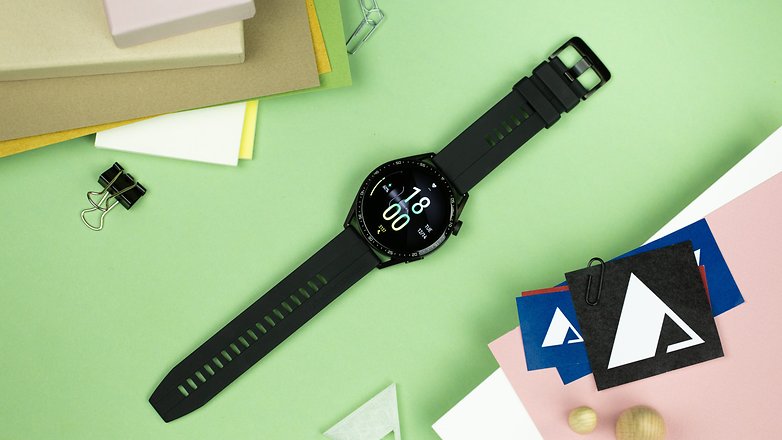
According to Huawei's homepage, the smaller watch should last four days with intensive use. Since we do not have this model, we unfortunately cannot verify this in everyday life. What I could attest for both models, however, is the compatibility of wireless charging. Because with the Pixel 6, I was able to charge the smartwatch without the included charging puck.
The charging puck, by the way, is the same as the more expensive Huawei model. It is magnetically attached to the watch and connects to your notebook or charger via USB-A.
Conclusion
The new GT model is a smartwatch with a lot of highs and lows. Although the price of 229 Euros (around 229 USD) seems affordable at first glance, it also means a lot of compromises. There is no LTE model, NFC for mobile payments is missing, and Huawei falls behind in tracking features compared with many other smartwatches. In addition, the range of functions can hardly be expanded with apps in the Huawei Store.
The battery life of the new smartwatch model is particularly noteworthy. However, the promised two weeks only apply to the larger model, which starts at 230 GBP/329 CAD. The smaller version lasts "only" seven days, which is still solid. I have to praise Huawei again for the very high build quality and the good operating concept, which comes from the interaction of the 3D crown and the intuitive HarmonyOS.
- Not convinced? Here's the best smartwatches list on NextPit
In the current Huawei lineup, the Watch GT 3 is recommended for those who don't want to spend a lot on a smartwatch. The price is attractive for a high-quality smartwatch with a solid feature set. However, there are better models from other manufacturers at a similar price point. Samsung's Galaxy Watch 4 in particular is a threat to the GT 3 with its great feature set and many apps.
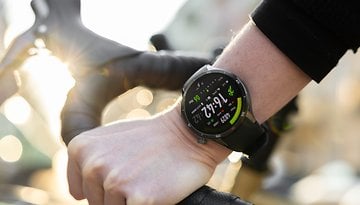


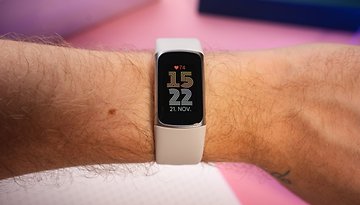

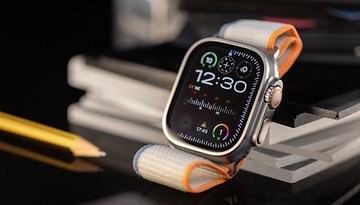








From my PoV, the things to look for in smartwatch: baterry life, battery life, battery life, tracking capabilities, and looks. The GT3 checks all boxes
Lots of wrong information gt3 runs on lite OS not on harmony, the ecg for ALL smart wtaches is not 24/7 but only when you initialise a measurement how will that safe you from a heart atack, that's based on how a ecg works. The gt3 is pretty much the screen from the watch3/pro with the hardware of a gt2 plus a improved set of sensors that are better that the sensors from the watch3/pro ( gt2/pro has same sensors for spo2/and pulse as the watch 3) and the design is a slimmer version of the watch 3, the gt3 is not a smart watch but a superb fitness track with some "smartwatch" functions pretty much a clone of gt2/pro in a new dress.
-
Admin
-
Staff
Dec 23, 2021 Link to commentHuawei's messaging for "their" operating systems is super confusing (and annoying).
As far as we know, the GT3 runs HarmonyOS (2.1, btw), but not necessarily the same HarmonyOS for tablets and TVs (or phones), which runs on top of the Linux kernel (and is basically a fork of the Android Open Source Project, AOSP).
For smartwatches (and IoT devices), a different system with the same name runs on top of the LiteOS kernel.
Regarding whether the device is a pure-bred smartwatch or a fitness tracker, Huawei positions the GT3 as a smartwatch, but we agree that the lines are very blurry there...
You haven't got your facts straight. The GT3 runs Harmony OS 2.X. Not sure why you are mentioning ECG here but HR tracking and ECG are worlds aparts, and yes, HR tracking is 24/7.
O
You haven't got your facts straight. The GT3 runs Harmony OS 2.1.